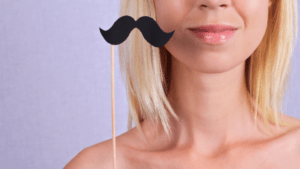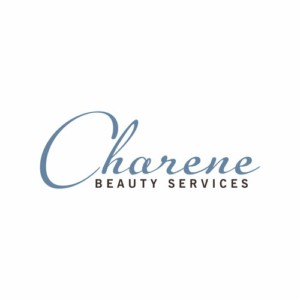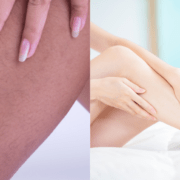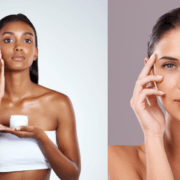How Long Should Electrolysis Take? What to Expect from Your Sessions
Presently, hair removal is no longer limited as a lifestyle choice. Some individuals believe hair removal is necessary for hygiene, and others take it as a cosmetic procedure. Whatever your reason may be, you must know that new and advanced scientific hair removal methods like Electrolysis are better than the traditional techniques. Electrolysis is emerging as a popular choice as people are gaining awareness about alternatives to temporary hair removal methods, such as laser, which is permanent hair reduction.
As an individual opting for the electrolysis treatment, you must understand that every cosmetic procedure is two-way. It involves your body, which is in treatment, and the professional providing services. Furthermore, every treatment has an ‘effect time,’ under which the procedure must occur to show the best results. This blog aims to cover all this information so you can shed all your fears and confidently complete your electrolysis treatment within time.

A Brief About Electrolysis
While doing the procedure, a professional electrologist completely damages the hair follicles sending a current through them. Here are key takeaways:
- It is the only permanent hair removal method approved by the FDA..
- It is economical. The average cost per session costs $55.
- It works for all hair and skin types.
- It can treat the area near the eyes.
When you know key points about Electrolysis, the next step is to delve into details like how much time does it take? Or how many sessions do you require?
How Many Electrolysis Sessions Do I Need To Take?
In general, it can take between 8 and 12 sessions of electrolysis treatments if you want permanent hair removal. The number of sessions can differ from person to person. Usually, when you go along with the treatment, you get an idea of how many sessions it will take you for permanent hair removal. A consultation is always recommended.
On average, the total time for treatment, from start to finish, is 12 months. For some, the time may exceed because Electrolysis varies from person to person, like any other cosmetic procedure. It depends on the area in treatment or the professional who is doing the treatment. It can take a period ranging from 8 months up to 2 years in some cases. However, a sure shot reward is – hair once gone is gone forever.
Let’s now explore how the professionals prepare a treatment schedule for you.
Electrolysis Treatment Schedule: Factors to Consider For the Face

The size of the area to be treated has a significant impact on the duration of the electrolysis treatment. An area that many electrologists have to treat most is face. It may take 4-6 months of regular visits with your electrologist to take control of the problem of excessive hair growth. You can notice that the treatment demands consistency.
The frequency of “regular” appointments varies depending on the amount of hair treated, although it is usually every 10-14 days. It is essential to catch each hair as it emerges from the skin because the roots can regenerate to some extent if not treated regularly.
Allowing long periods between treatments will slow down your progress and make you believe Electrolysis is ineffective. We may feel that this appears to be an extensive time frame, but it is impossible to be more exact due to significant differences in treatment response. In addition, many things come to a transparent structure only during the treatment, so you have to be patient to see the results. As the hair growth slows, thins out, and eventually is eliminated.
For The Body

In terms of the period between electrolysis visits, you have a little more liberty with your body than your face. An electrologist can clear a considerably broader region of the body than the face during an appointment. So, the treatment tends to be quick because it is easier to work on the body (less contoured surface, which increases speed), as well as the fact that the hair tends to be spaced widely apart, allowing you to notice results much faster.
The body also has some tricky areas like the bikini line. Working on the underarms or a bikini line for two or three hours will result in a noticeable improvement in that specific area. Note here that working on the face for two or three hours is often just the beginning. You may easily wait 10-12 weeks for another treatment after clearing an area like the arms or legs once. It keeps as much hair as possible on the skin’s surface, resulting in more effective treatment.
If you go into your electrolysis visits to finish your treatment, you should be able to finish in around 18-20 months at most. But, again, commitment is the key for the treatment to be effective.
Making sessions on a monthly or bi-monthly basis will halt your progress indefinitely because you will undoubtedly shave, tweeze, or wax in the meantime. In addition, these methods may undo some of the prior work that an electrologist has done on your body.
You should notice improvements in a matter of months when you consistently follow the professional’s advice.
What Other Factors Affect The Number Of Electrolysis Sessions?
The points mentioned above inform you about the treatment time according to specific body areas. Furthermore, here are some other technical factors that decide the duration of the electrolysis treatment.
- Your Skin Type — Skin type and skin sensitivity are crucial factors influencing the result. Consequently, they also affect the number of treatments.
- How Hydrated Your Skin Is — An electrologist can smoothly treat hydrated skin. Electrical current is conducted more swiftly and readily in moist tissue than in dry. Moisture is important for effective electrolysis treatment. The moisture molecules must vibrate to generate heat and cause friction. Therefore, if the amount of moisture is less, it generates less heat.
- Hair Thickness — Thicker hair takes longer to treat.
- Quantity Of Hair — It takes longer to remove hair with close placement than those further apart.
- Location Of The Hair — Different body areas has varying growth cycles. For example, bikini hair takes more time to clear than facial hair because of its long growth cycle.
- Hormonal Balance — Various biological changes (puberty, illness, emotional upset) can lead to hormonal change that alters vellus hairs to terminal hairs. These changes also activate previously sleeping hair follicles. Estradiol can act as a brake on hair follicle cycling by delaying initiation of the growing stage and prolonging the resting stage’s duration. Some individuals are susceptible to changes in hormonal levels. It affects the number of treatment sessions.
- Your Capacity For Discomfort— The higher your capacity for discomfort, the longer a professional can continue the treatment. You can use topical anesthetic to reduce discomfort. The electrologist can carry out more prolonged treatment with more intensity when topical anesthetic is used.
- Hair Removal Techniques You Tried In The Past — It can distort your follicles if you have had epilation or waxing before. In addition, it makes inserting the probe more challenging. It is also worth noting that hair removed through plucking, waxing, or threading may not regrow for months. The time it takes for a plucked hair to recover varies by body location, but on average, regeneration takes 2 to 4 months following plucking. So overall, it makes the process difficult.
- The Shape Of Your Hair Follicle — Curved hair is more difficult to remove as it hinders the insertion with the probe.
- How Consistent Are You (Scheduling)? — A professional always advises a fixed time interval between treatments – ranging from 1-2 weeks at first to a month or more once your hair is trained to grow in the proper hair growth cycle.
- Safety Margin — Remember that when it comes to electrolysis hair removal, the goal is to strike a delicate balance between delivering just enough destructive energy to destroy the hair follicle while avoiding unfavorable side effects. Even if this means some regrowth, we always err on the side of caution.
Final Word
We always recommend that you zero in on the process only after having a consultation. Secondly, your cooperation is the crucial part. Finally, it is your treatment and your responsibility to be consistent with it.
Lastly, as an individual or a client, you must consider that Electrolysis combines art and science. Some would say more art. Interestingly, professionals learn the science side, but they gradually have to develop the artistic side. For example, no technique teaches them to manipulate the probe or the right time to cut the current. It takes ample hours and sometimes years to develop that kind of intuition. Hence, always choose an experienced and certified professional.
Looking for Best Beauty Parlour Near Me – Charene Beauty Services








